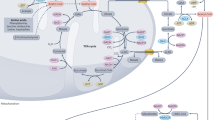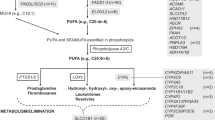Abstract
ABSTRACT. Isovaleric acidemia is a disorder of leucine metabolism caused by a deficiency of isovaleryl-CoA dehydrogenase. At least two clinical subgroups of patients exist: a severe form, in which symptoms occur within the 1st wk of life, and a milder variant in which manifestations develop later in life. We developed a modified version of the tritium release assay to accurately measure residual isovaleryl-CoA dehydrogenase activity in fibroblasts from patients with both forms of isovaleric acidemia. In the modified assay, specific isovaleryl-CoA dehydrogenasecatalyzed tritium release from [2,3-3H]isovaleryl-CoA was determined by including an inhibitor of isovaleryl-CoA dehydrogenase, (methylenecyclopropyl)acetyl-CoA, in one of the tubes in paired assays, to determine the nonspecifically released 3H2O. Residual activities of the nine isovaleric acidemia lines tested ranged from 0 to 0.67 pmol 3H2O/min/mg protein (controls 19.4 ± 8.0). The three lines from mildly affected individuals all had no detectable activity, whereas the severe cases had a mean of 0.41 pmol 3H2O/min/mg protein. Normal human fibroblast isovaleryl- CoA dehydrogenase had a Km for isovaleryl-CoA of 22 µM, with a Vmax of 51 pmol 3H2O/min/mg protein. The Ki of isovaleryl-CoA dehydrogenase by (methylenecyclopropyl) acetyl-CoA was approximately 2 µM.
Similar content being viewed by others
Log in or create a free account to read this content
Gain free access to this article, as well as selected content from this journal and more on nature.com
or
Author information
Authors and Affiliations
Rights and permissions
About this article
Cite this article
Hyman, D., Tanaka, K. Isovaleryl-CoA Dehydrogenase Activity in Isovaleric Acidemia Fibroblasts Using an Improved Tritium Release Assay. Pediatr Res 20, 59–61 (1986). https://doi.org/10.1203/00006450-198601000-00017
Received:
Accepted:
Issue date:
DOI: https://doi.org/10.1203/00006450-198601000-00017
This article is cited by
-
Screening for defects of branched-chain amino acid metabolism
European Journal of Pediatrics (1994)



